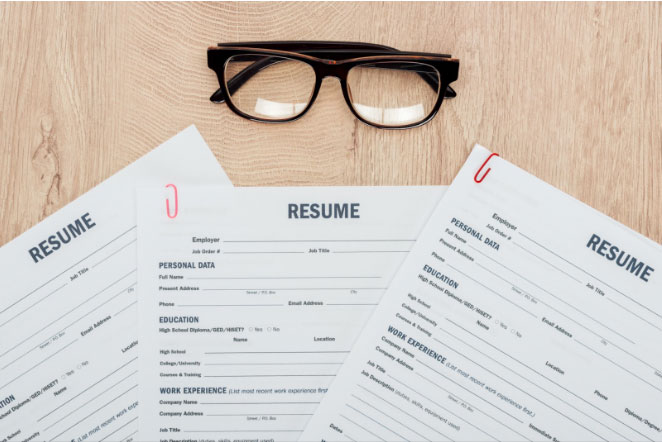The most common question that pops up when writing a resume is whether to include your current job experience. It seems so obvious, but there are some nuances to this question. Including your current job experience can enhance the relevance and impact of your resume if done appropriately. However, there is also the potential for pitfalls if this information is presented inappropriately.

This article discusses why one should put down a current job, how it should be done, and when one should not do it.
Why Should You List Your Current Job?
1. Highlight Relevant Experience
Typically, your present job would be the best update and most relevant experience in respect to your career goals. An employer values recent roles since it best indicates their current skills and abilities.
- It will bring out what you have been undertaking and achievements concerning the job you happen to apply for.
- It speaks for professional development and success in your profession.
2. Define Employment Continuity
Leaving your current job out can bring about the question of employment gaps. Recruiters will be made to wonder why this role is missing, leading to unnecessary speculation.
- Including the current job indicates a coherent history of career progression.
- It reiterates to the employers that you are involved in your profession.
3. Demonstrate Leadership or Key Contributions
A present position which might imply management responsibility or important contributions to high priority projects will help to demonstrate leadership skills and outcome results.
How to List Your Present Work Effectively

Including your current job requires such close attention to detail so as not to confuse the resume or be redundant. Here are some best practices:
1. Formatting well and professionally
Ensure that your current job is formatted similarly to previous roles. End
- Job designation
- Company name
- Location:
- Starting date (month and year)
- A brief description of duties and accomplishments
2. Emphasize accomplishments rather than responsibilities
Instead of just listing generic duties, focus on measurable results. Example:
Instead of: “Team sales representatives were managed“.
Write: “Led a team of 10 sales representatives, increasing regional revenue by 25% within six months”
3. Include Keywords
Tailor the job description to align with the position you’re applying for. Incorporate relevant keywords to ensure your resume passes Applicant Tracking Systems (ATS).
4. Be honest about your present position:
Avoid exaggeration. Lying about your current job increases the chance of credibility issues being raised at interviews or later through reference checks.
When can you Quit your Current Job?

While it is generally a good practice to include your current job, there are certain circumstances that may make you withhold or downplay:
1. When Changing Careers
If your current job is unrelated to the field you’re pursuing, it might not add significant value. In this case:
- Emphasis on transferable skills.
- Emphasize experiences or achievements that are better suited to the new industry.
2. If You Are Still in the Early Stages
If it is too insignificant to your story, you can just leave it out or put it in with minimal details if you are recently hired. Finally, in cases of confidentiality violation.
3. In Case of Confidentiality Concerns
If you’re employed in a sensitive or high-profile role, disclosing certain details might breach confidentiality agreements. In such cases, consider using broad terms or omitting sensitive specifics.
How to Handle Potential Challenges
1. How to Present an Ongoing Role
Use phrases like:
- “Currently managing a team of…”
- “Leading ongoing projects, such as…”
This makes it clear that the role is still active.
2. What If You’re Job Searching While Employed?
If you’re conducting a confidential job search, ensure your resume does not reveal proprietary or sensitive information about your current employer.
3. How to Address Performance Issues
If the current job is not doing well, make sure to highlight achievements made in previous roles and minimize the arguments on current challenges.
The Benefits of Including Current Job Experience
1. It Keeps the Resume Competitive:
Leaving the current job off the resume might make the resume appear old, especially if the time elapsed since the last experience was significant. Find the best resume writing services and make it done.
2. Supports Networking Efforts:
When shared on platforms like LinkedIn, including your current role ensures your profile is congruent with your resume, making your network more credible.
3. Reflects Career Involvement:
An updated professional resume services signal that you’re serious about professional growth and maintaining an accurate representation of your capabilities.
Final Thoughts
In general, list your current job on the resume because it speaks to current experience, growth, and applicability. How you say it is important, though – tailor your descriptions to be in line with your career goals and ensure that everything supports the overall professional story.
For personalized advice on professional resume writing services and career advancement, ExcellenceResumes is here to help. Our team of experts creates tailored resumes that highlight your strengths and increase your chances of landing your dream job. Contact us today to get started!
 Tasselline | Latest Articles By Singaporeans, for Singaporeans Article Site for Singaporeans
Tasselline | Latest Articles By Singaporeans, for Singaporeans Article Site for Singaporeans